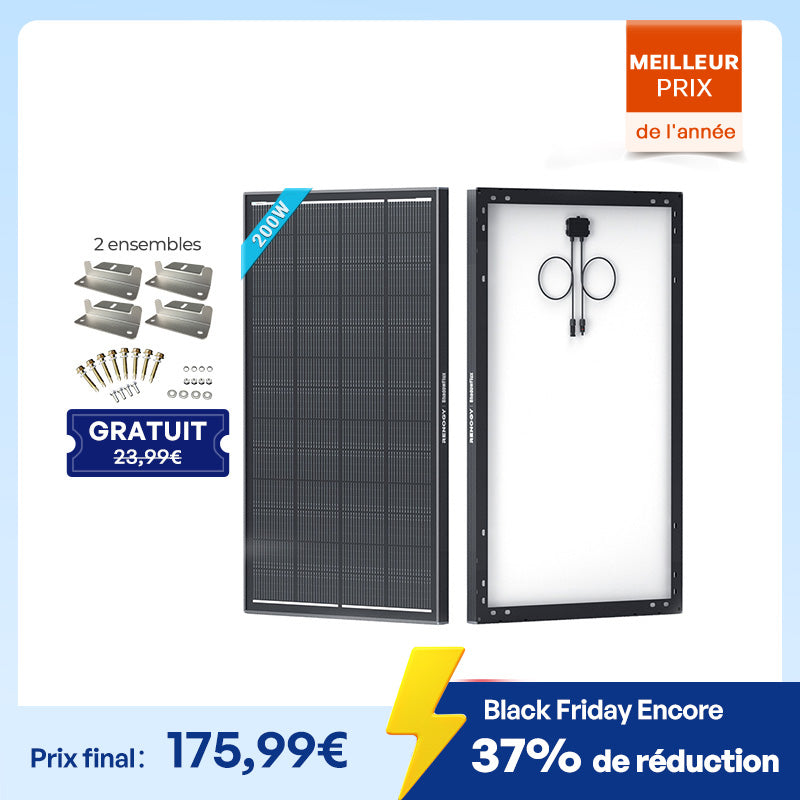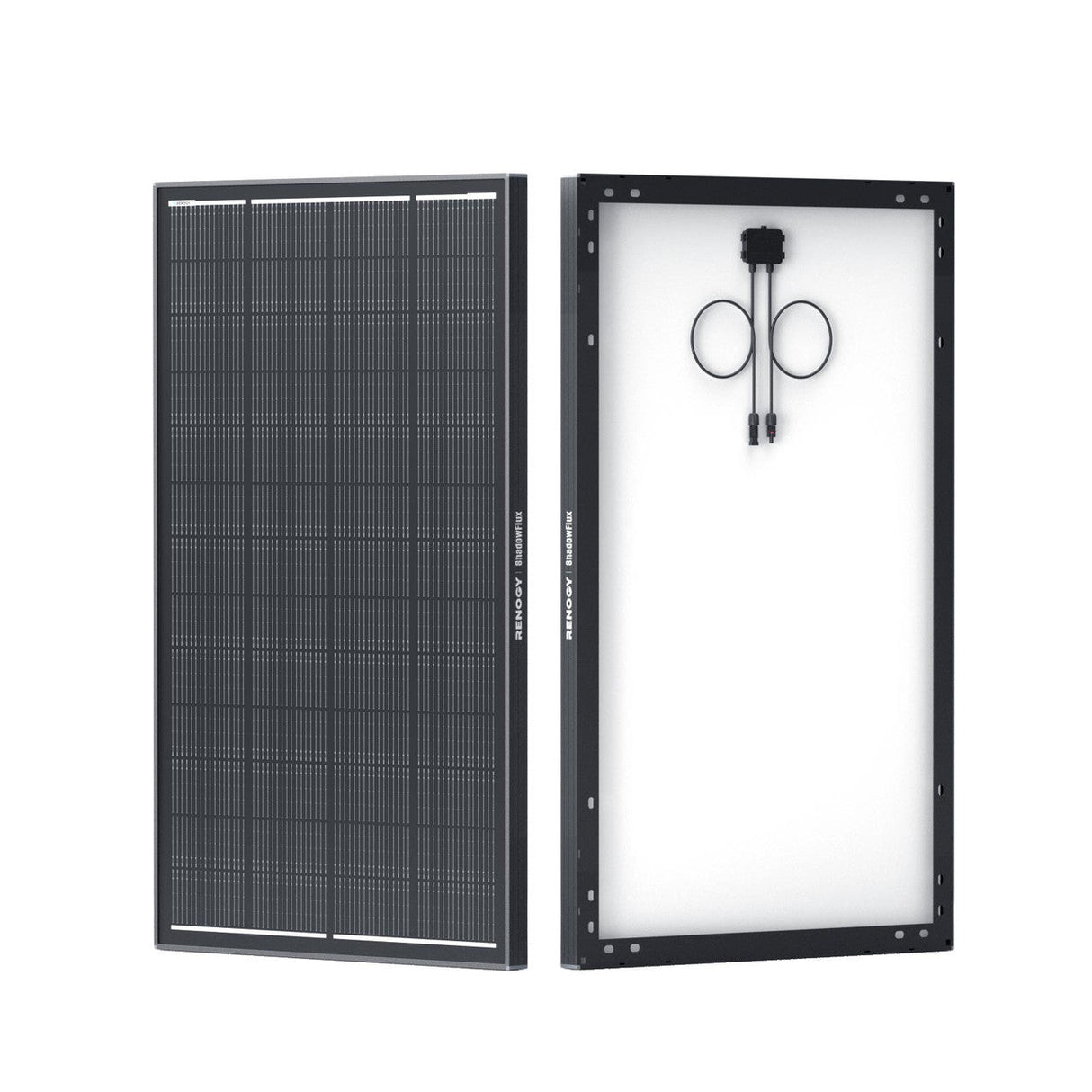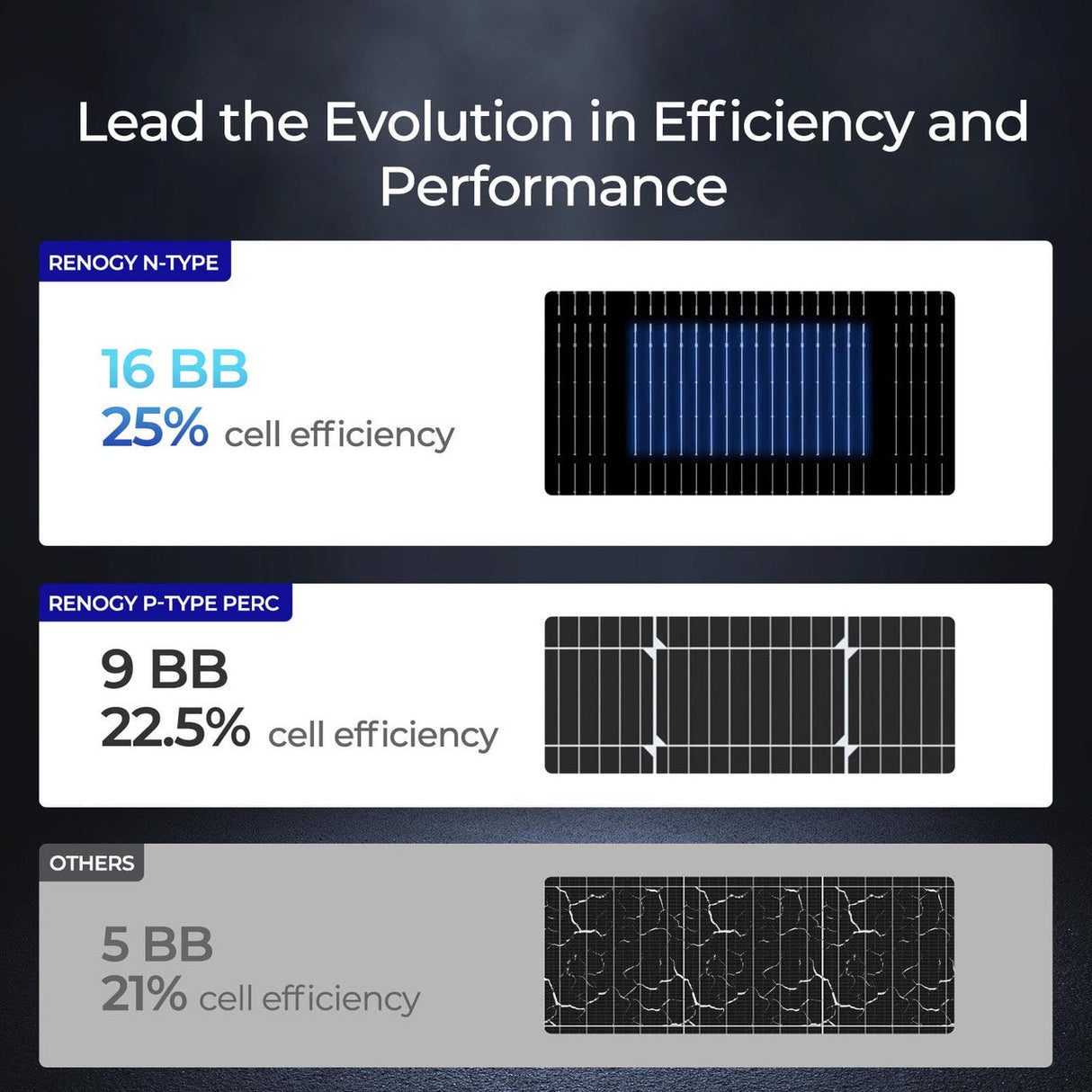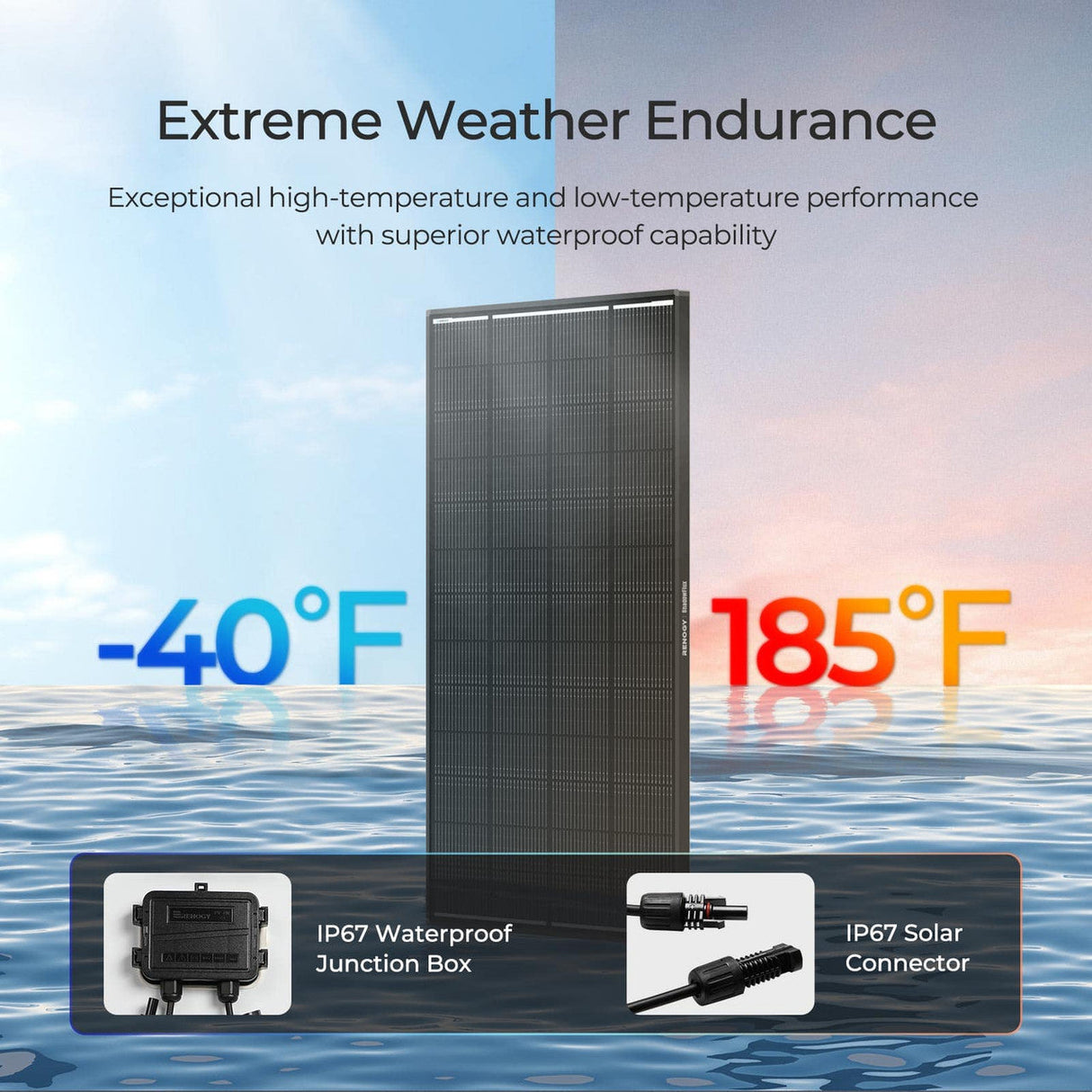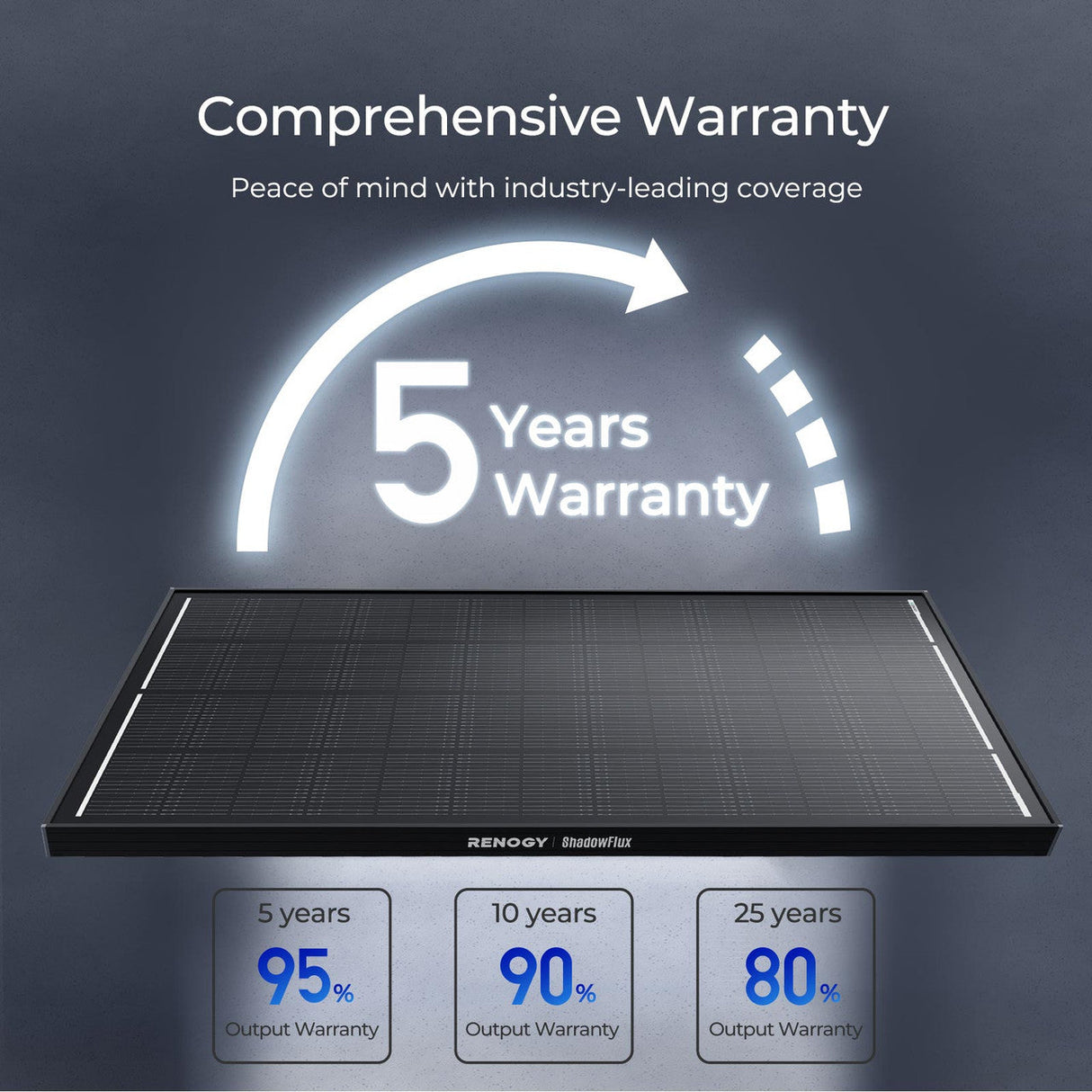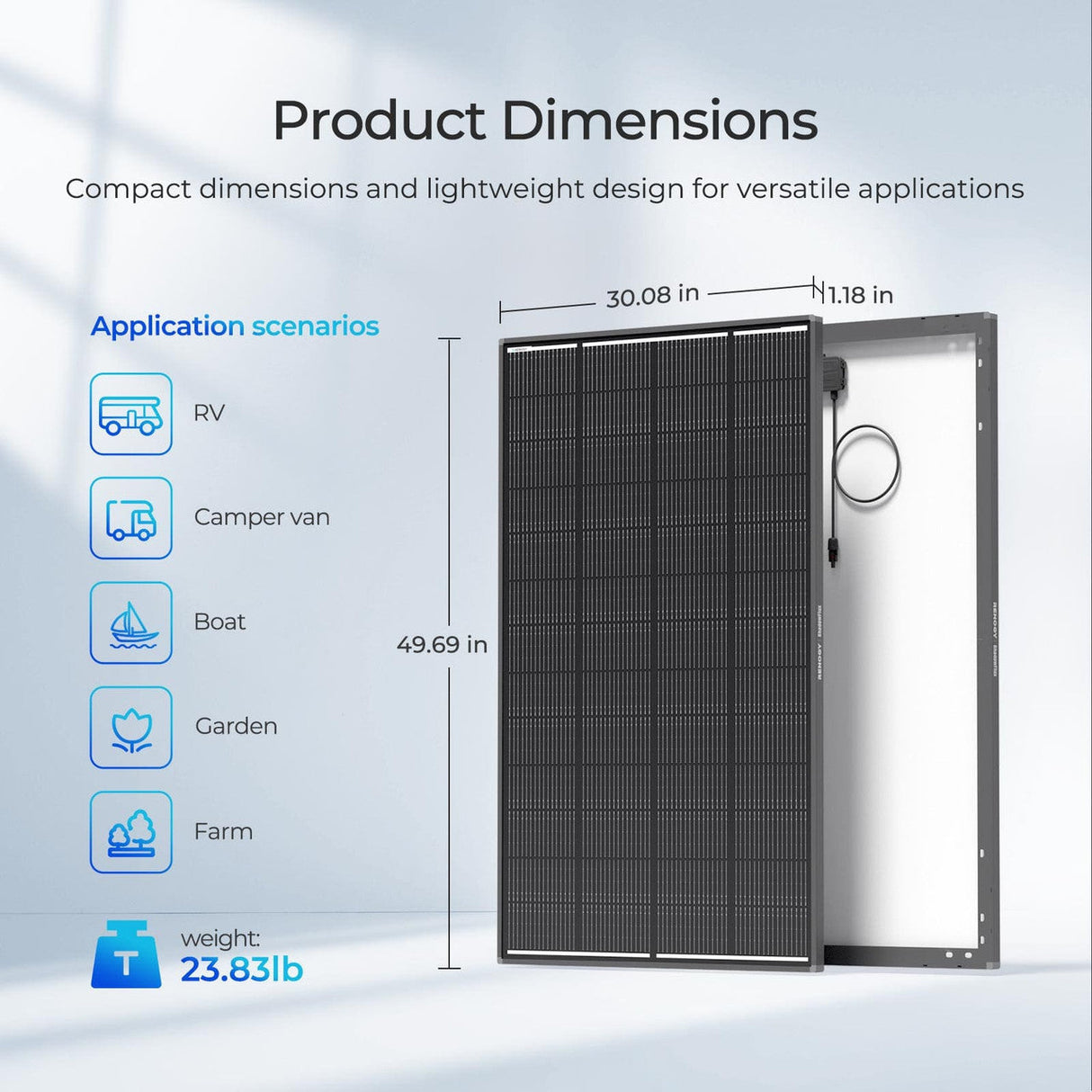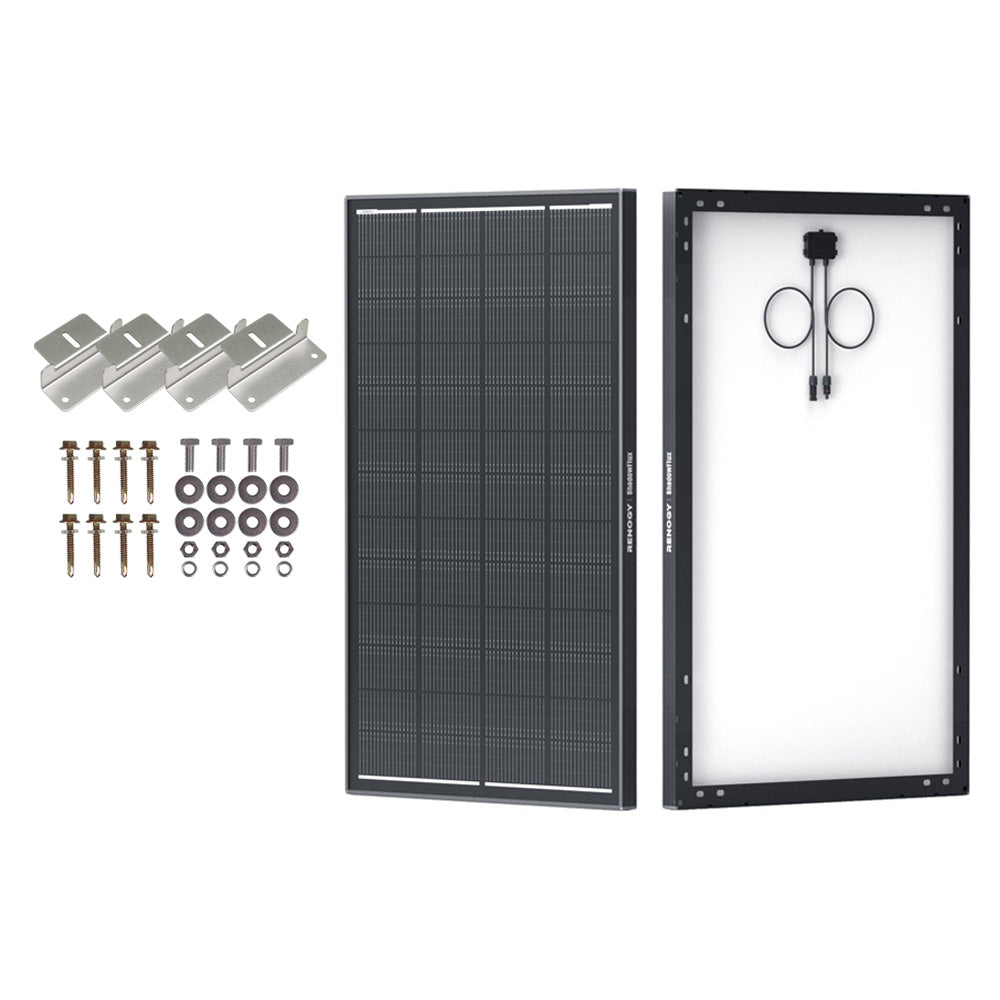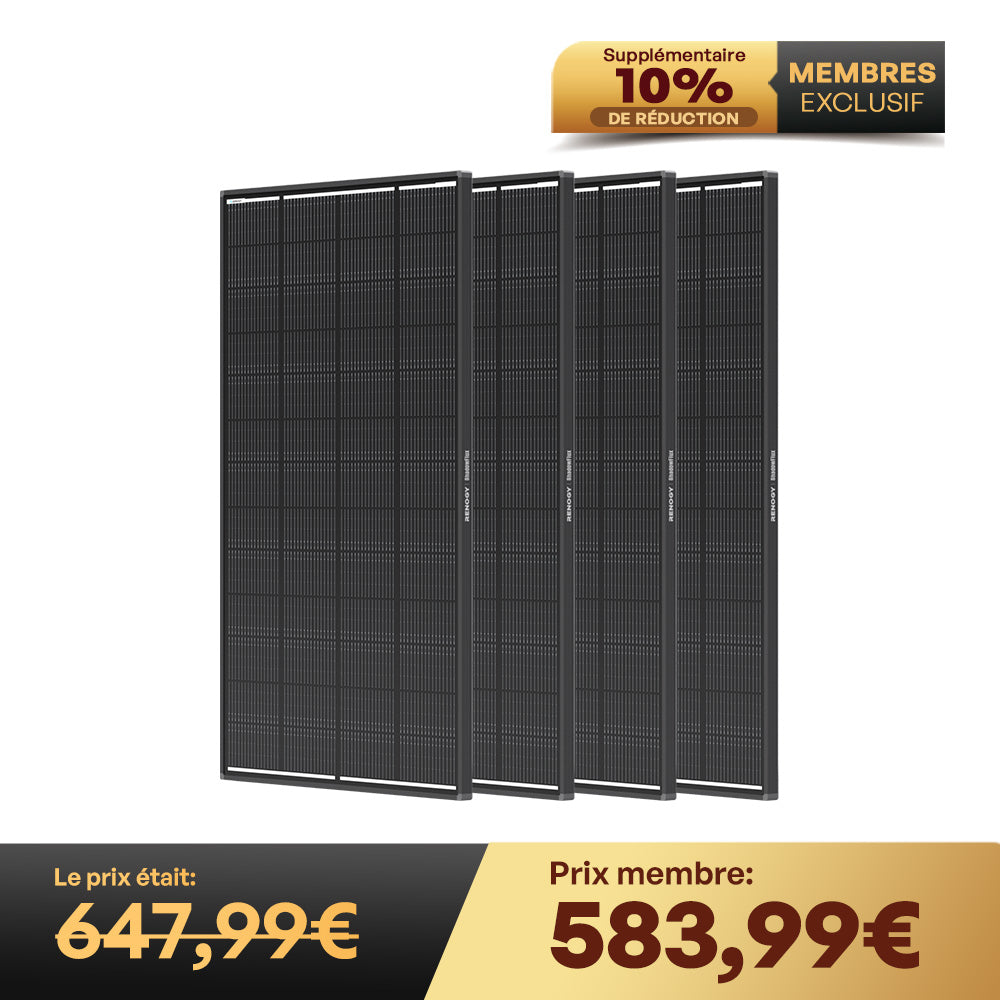Renogy 200W ShadowFlux N-Type Cell Anti-Shade Solar Panel
- Technologie avancée ShadowFlux anti-ombrage Maximise la production d’énergie même en conditions d’ombre partielle.
- Efficacité élevée Cellules à 25 % d’efficacité avec une excellente performance anti-points chauds.
- Design optimisé 7 % plus petit et 10 % plus léger que les panneaux solaires rigides traditionnels.
- Résistance et durabilité Indice de protection IP67 ou supérieur, conçu pour résister aux conditions difficiles.
- Garantie 5 ans sur la qualité de fabrication et jusqu’à 25 ans pour une production minimale garantie à 80 %.
Renogy 200W ShadowFlux N-Type Cell Anti-Shade Solar Panel - 1 Pack with Z Bracket is backordered and will ship as soon as it is back in stock.
200W ShadowFlux N-Type Solar Panel with Anti-Shading Technology
First N-Type solar panel on the market with anti-shading ShadowFlux technology.
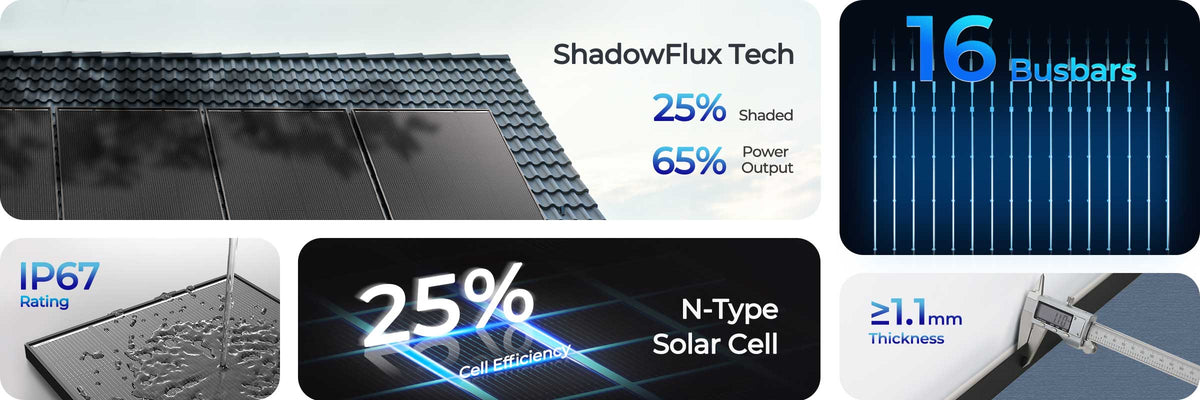
Cell-level shadow management
Minimizes energy loss by optimizing the performance of each cell.
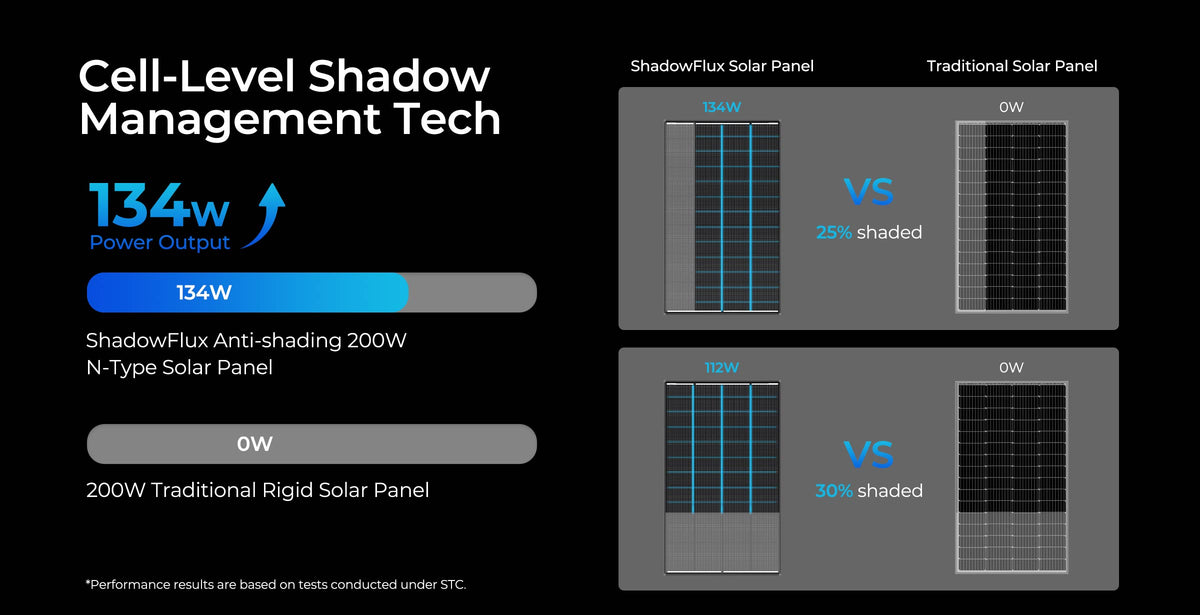
Optimal performance, even in the shade
Reduces energy losses and ensures stable production throughout the day.
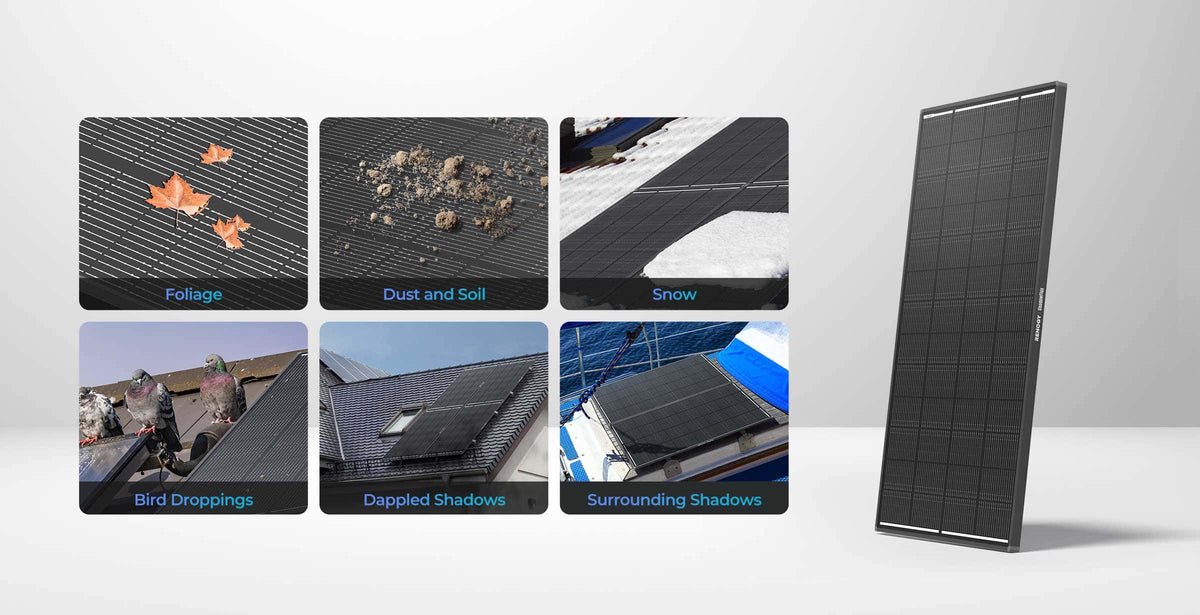
Compact panels, maximum power
Designed to maximize efficiency in a smaller package, utilizing every square inch.
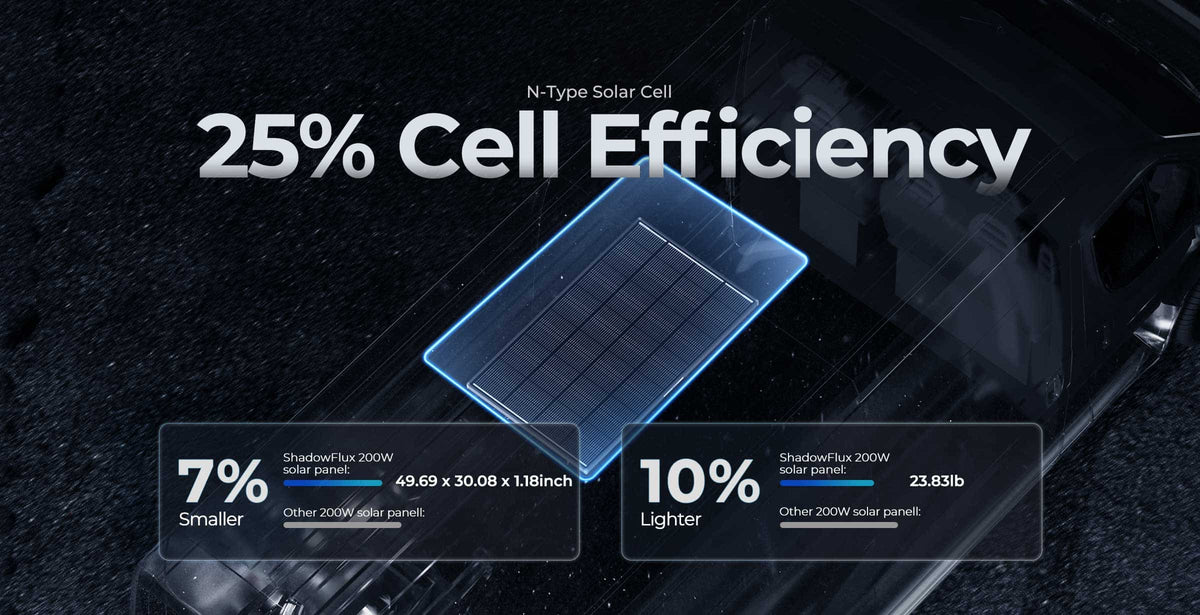
No more worries about shade
Excellent performance in the face of varying sunlight angles, ensuring stable power.
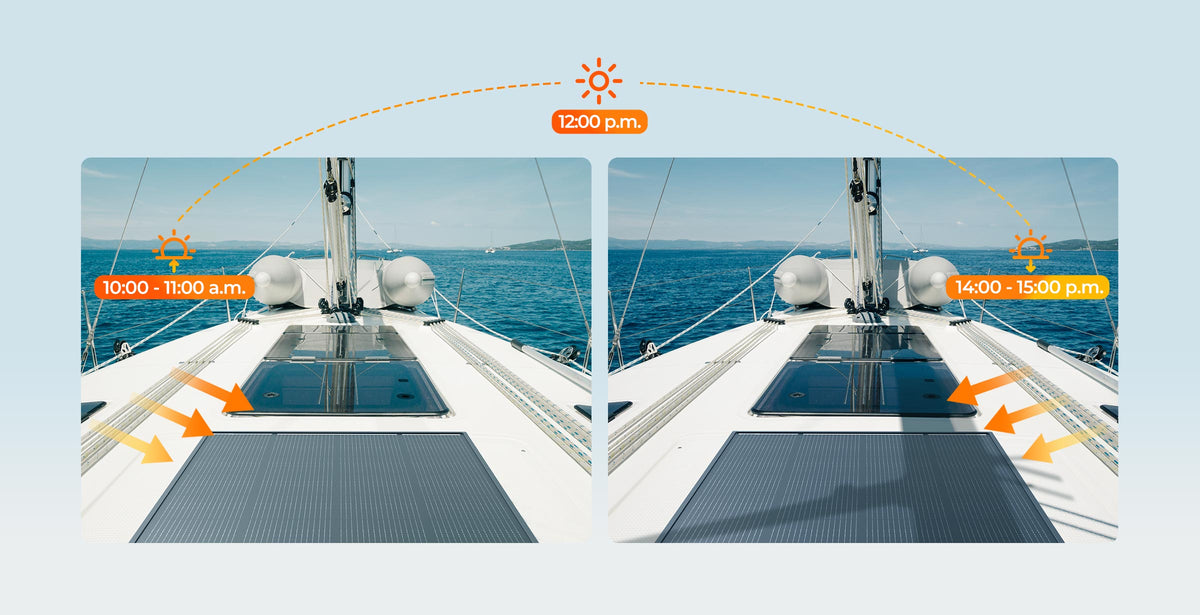
Increased resistance to hot spots
ShadowFlux cell management technology reduces the formation of hot spots due to shade or dirt, limiting heat and ensuring safe and reliable performance.

Reinforced packaging for maximum protection
Enhanced protection with improved padding and secure packaging to preserve your product during transport.
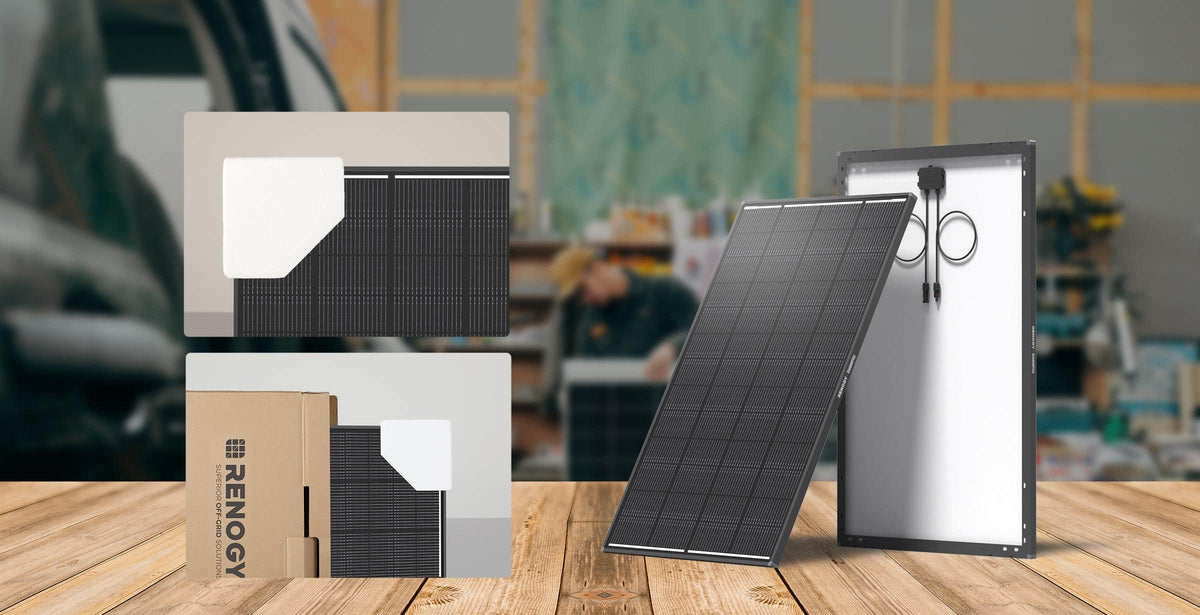
Renogy Solar Panel Guide
Essential advice for choosing and optimizing your solar installation.

Package Contents
-
Renogy 200W ShadowFlux N-Type Anti-Shade Solar Panel
x 1
Spécifications techniques
Certifications
Frequently Asked Questions
What can ShadowFlux anti-shadow technology do for me?
What can ShadowFlux anti-shadow technology do for me?
ShadowFlux technology maintains high energy production even when the solar panel is partially shaded, significantly increasing the total power generated. It also protects the panel from damage caused by shade.
What do I need to complete my off-grid solar system?
What do I need to complete my off-grid solar system?
For a stand-alone solar system, you need a solar panel connected to a charge controller to control the current, as well as a battery to store the energy. You will also need adapter cables to connect the panels to the controller, and tray cables to connect the controller to the deep-cycle battery.
What is the difference between an on-grid and off-grid system?
What is the difference between an on-grid and off-grid system?
An on-grid system is connected to the public power grid, while an off-grid system is not connected to the grid and stores the energy produced for later use. Off-grid systems are not affected by grid outages.
Why is my solar panel producing less energy than expected?
Why is my solar panel producing less energy than expected?
Several factors can reduce the performance of a solar panel, including indirect sunlight, high temperatures, cloud cover, or dirt on the panel surface, all of which decrease energy production.
How should I connect my solar panels in my electrical circuit (series vs. parallel)?
How should I connect my solar panels in my electrical circuit (series vs. parallel)?
In series, the voltages of the panels add up, while the intensity remains that of a single panel.
In parallel, the intensities are added together, while the voltage remains that of a single panel.
To optimize the power and capacity of your system, you can combine series and parallel connections.
How many solar panels do I need?
How many solar panels do I need?
To determine the number of panels needed, start by determining your power consumption in watts. Capacity is often measured in watt-hours (Wh), calculated by multiplying the wattage by the number of hours of use, then by a safety factor (1.5 to 2). Therefore, it is recommended to size your battery first, then choose the number of panels based on the power required to charge it efficiently.
What does 12V/24V mean in the solar panel label? Why is it different from the value indicated on the label or datasheet?
What does 12V/24V mean in the solar panel label? Why is it different from the value indicated on the label or datasheet?
The "12V/24V" in the product title (e.g. 150W 12V solar panel) does not correspond to the actual voltage of the panel (open-circuit voltage or maximum voltage), but to the voltage of the solar system or storage system for which the panel is intended. The panel voltage must always be higher than the system voltage to ensure efficient charging.

